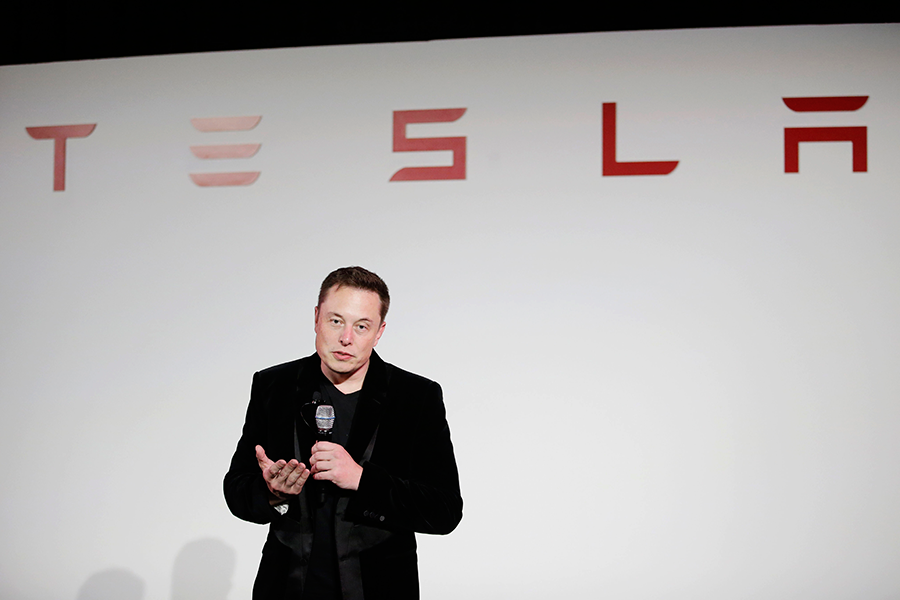Can giant Tesla batteries solve South Australia's energy woes?
Loading...
As the United States looks back on an unusually warm winter, Australia is reeling from what climate scientists have dubbed “the angry summer.” A total of 205 temperature records were broken Down Under in a 90-day period.
The sweltering heat couldn’t come at a worse time for the state of South Australia, often referred to as S.A. The state’s Port Augusta power plant shut down last May, taking with it 520 megawatt-hours of generating capacity. The plant’s owners said they couldn’t compete with subsidized renewable energy.
But sun and wind power have proven too fickle to meet the state’s energy demands. As a result, SA’s overtaxed power grid has blacked out repeatedly in recent months, prices for customers have spiked, and policymakers are struggling to find a way out.
“There are potential solutions,” the Australian Broadcasting Corporation’s Nick Harmsen wrote Thursday, predicting that “as market prices continue to increase, more customers will take power into their own hands, and generate or store their own.” In doing so, however, they could shrink power companies’ revenue and make supply less predictable: “mak[ing] the rest of the grid less stable for those who depend on it.”
As this bleak assessment of SA’s dilemma hit the web, Elon Musk stepped in with a novel solution: Build a giant Tesla battery pack to store excess power, then dole it out when demand spikes.
The idea was first floated by Lyndon Rive, Tesla’s energy products vice president. While visiting a power substation near Melbourne earlier this week, Mr. Rive boasted that the company could install the 100 to 300 megawatt-hours’ worth of storage capacity that South Australia needs within 100 days.
While Rive wasn’t the first to propose building more storage, Tesla’s high profile drew a response. “How serious are you about this bet?” Australian billionaire Mike Cannon-Brookes asked Mr. Musk via Twitter. “If I can make the $ happen (and politics), can you guarantee the 100 MWH in 100 days?”
“Tesla will get the system installed and working 100 days from contract signature or it is free,” Musk replied. “That serious enough for you?”
To which Mr. Cannon-Brookes answered, “You’re on mate.”
While Musk has a reputation for audacious goals, there’s reason to think this one isn’t typical Silicon Valley bravado. The company has just rolled out its $5,500 Powerwall 2 high-capacity battery, manufactured in a Nevada “Gigafactory," which marks a major increase in storage capacity over existing models.
According to the Australian Financial Review’s Ben Potter, the Powerwall 2 “brings closer the tipping point at which batteries penetrate the mass market as solar panels have done.” That’s not only good news for the estimated 1.6 million Australian households with rooftop solar, but also for power companies, who could stack the batteries to create massive energy banks.
And Tesla has already proven itself able to build these kinds of facilities. This past January, Tesla took just 88 days to build an 80 MWh battery facility in California, providing a backup power source that was sorely needed after a 2015 methane leak put the Aliso Canyon gas storage facility out of commission.
But despite recent progress, the technology hasn’t had much time to prove itself. “Storage is a piece that’s been missing on the grid for 100 years, Tesla’s chief technology officer, J.B. Straubel, told the Los Angeles Times in January. “This wasn’t really at all possible five or 10 years ago. Storage is quite a new thing.”
In a sign of just how new, Prime Minister Malcolm Turnbull’s government had been instead eyeing pumped hydropower to alleviate S.A.’s energy woes. It had earmarked 20 million Australian dollars, or about $15 million, for research into the 1920s-era technology, which involves pumping water to an uphill reservoir, then allowing it to flow through generators at a constant rate.
Large-scale batteries have some ground to make up. The technology’s risks were made clear in the early 2010s, when a battery installation near an Oahu wind farm in Hawaii caught fire three times in just 18 months of operation. After that mishap, The New York Times reported, “investment in battery storage all but dried up for a few years.”
But now, South Australia, desperate for a more stable energy supply, seems willing to give Mr. Musk’s technology a try. And if he can't deliver in 100 days, the state will expect him to pick up the tab.






